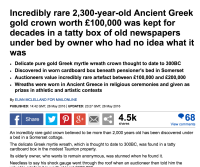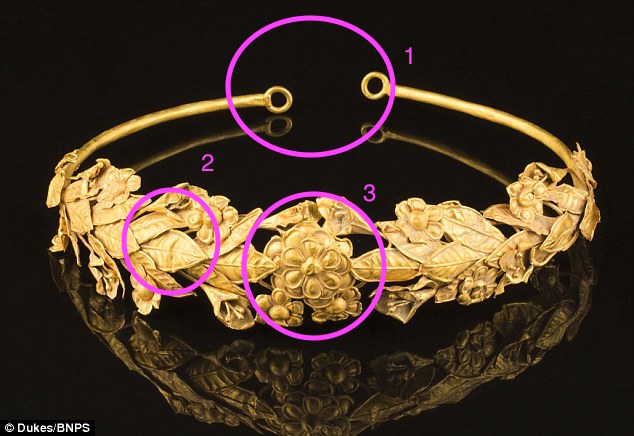Haven’t had this sort of story in a while, and this one is very interesting … from the Daily Mail:
An eagle-eyed antiques expert spotted a corner of what looked like a trough when he visited a property to look at some art indoors.
However, the expert spotted something in the garden – and fought through the undergrowth to reveal a 1,900-year-old marble sarcophagus.
Guy Schwinge, from Duke’s auction house in Dorchester, Dorset, also discovered a further treasure inside the house.
After rummaging around he happened upon an old auction catalogue from Duke’s – and it showed his saleroom had sold the ancient coffin in 1913.
It had remained at the Dorset house ever since, but the family had come to lose the knowledge of what it was.
Now this important lost treasure that has been dated to the second century AD is to go under the hammer again.
The 7ft long sarcophagus was made in Italy for a high ranking official, contemporaneous with Emperor Hadrian.
The decoration is centred by a pedimented entrance flanked by ionic columns, with the door slightly ajar. Further decoration includes laurel tied with a ribbon.
It is unclear when it was brought to the UK and its provenance goes back 100 years to when it was last sold.
The sarcophagus was part of the collection of Sir John Robinson from Newton Manor in Swanage, Dorset, which Duke’s sold.
In 1913 the object was bought by the family that owns the house on the Dorset coast where it was recently found, but it is unknown what it sold for.
Robinson was one of the greatest art experts and connoisseurs of the 19th century.
He was the first superintendent of the South Kensington Museum – now better known as the Victoria and Albert Museum.
He was also appointed as Queen Victoria’s Surveyor of Pictures and was largely responsible for building the collections of ancient and renaissance art at the museum.
He also amassed a large private collection of which this sarcophagus was a part. It’s possible that Robinson bought the sarcophagus on his travels to Italy.
Mr Schwinge said: ‘When I pulled up at the property I spotted what looked like a large garden trough peeping out from under some bushes.
‘I thought it looked interesting and when I commented the owner invited me to take a closer look.
‘As I drew closer I realised I was looking at a Roman sarcophagus in a remarkably good state of preservation, despite having been in the garden for 100 years.
‘After I went into the house to look at some other items, the client and I managed to find an old auction catalogue from 1913.
‘When I saw the name ‘Duke’s’ on the front I couldn’t believe it.
‘It turned out that we were the last firm to handle the sale in 1913 when we sold the collection of Sir John Charles Robinson at Newton Manor in Swanage.’
Art expert Laurence Keen OBE said: ‘This is a very important item. It is, to my mind, late 2nd or early 3rd century AD with carving of the highest quality.
‘The undecorated back probably suggests that it came from a private mausoleum of a high status individual where the tomb was placed against a wall.’
Another art expert said: ‘It is quite exceptional for a piece of Roman imperial art of this importance turn up in a garden.
‘It would be fascinating to find out where Robinson acquired it, but my view is that he probably purchased it on his travels in Italy.
‘It is much too fine to be Romano British.
‘There is always the chance, of course, that it came to this country in the 18th century and was originally part of one of the important Grand Tour collections of the Age of Enlightenment.’
The sale is on September 28.
The original article includes some photos (both now and ‘then’) … it’s a very interesting piece … not sure I’ve ever seen a temple depicted with the door slightly ajar (did this ‘house’ a former priest of some sort?).





 With that in mind, it was a very curious thing last Thursday, when — while the waves of coverage about that purported Aristotle tomb find were flooding my box — the
With that in mind, it was a very curious thing last Thursday, when — while the waves of coverage about that purported Aristotle tomb find were flooding my box — the 

